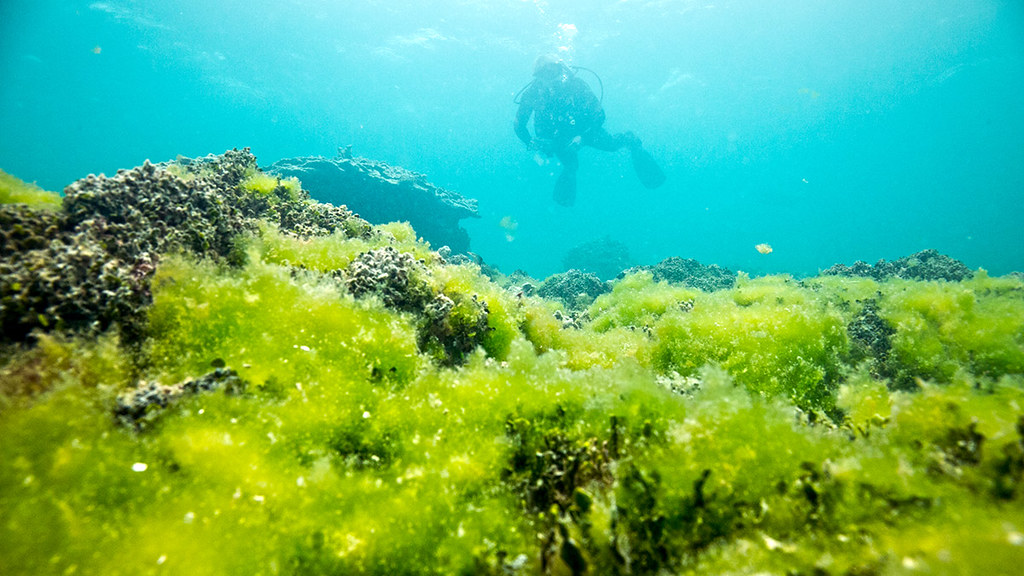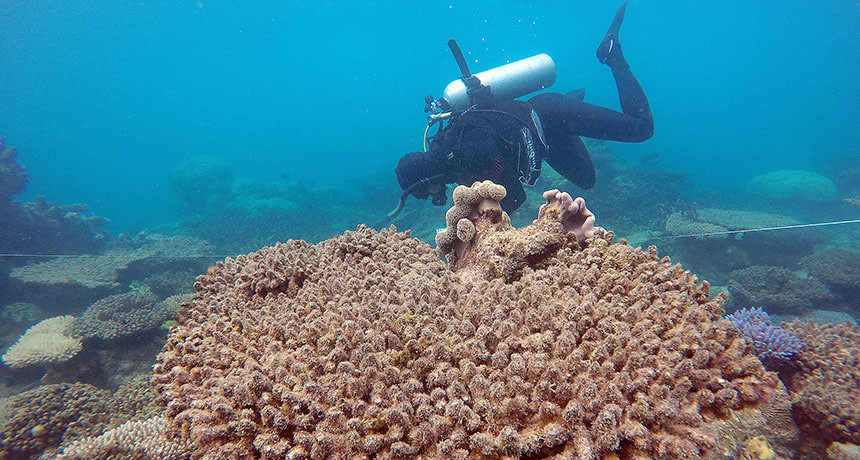一國際研究團隊首次計算出過去40年來,全球熱帶地區珊瑚白化率的增加。這篇發表於《科學》期刊的研究指出,珊瑚白化事件發生的間隔顯著變短,威脅珊瑚生態系統的存續以及數百萬人的生計。
珊瑚白化是指夏季破紀錄高溫破壞了棲息在珊瑚組織中的微小藻類,使它們變白。白化之後,珊瑚可能隨著溫度的降低慢慢恢復藻類的顏色,反之也可能死亡。

研究共同作者之一、美國國家海洋大氣管理局伊金(Mark Eakin)博士說:「珊瑚礁已經進入了人類主導的地質年代——人類世。過去50年來氣溫迅速上升,聖嬰現象首次對珊瑚產生危害,現在每個炎熱的夏天都能看到白化現象出現。」
研究主要作者、澳洲珊瑚礁卓越研究中心(ARC Centre of Excellence for Coral Reef Studies)主任休斯(Terry Hughes)教授說:「過去3、40年間,每個地點發生白化事件的時間間隔縮短成1/5;20世紀80年代初期每25到30年才一次,到2010年以來平均每6年就一次。在20世紀80年代之前,即使聖嬰現象強烈,也不曾發生珊瑚大規模白化,但現在由於氣溫持續上升,區域性大規模的珊瑚白化和死亡在全世界已經成為新常態。」
這篇研究「人類世珊瑚白化空間和時間模式」(“Spatial and temporal patterns of mass bleaching of corals in the Anthropocene”)將珊瑚白化現象分成三個時期,80年代前僅有地方性的珊瑚白化;20世紀80年代至90年代屬於過渡時期,當聖嬰現象比平常強烈時,開始出現大規模白化;到了現在則是氣候驅動白化時期,白化現象隨著聖嬰週期規律發生。
自1998年以來,澳洲大堡礁已經發生四次白化,包括在2016年和2017年連續發生兩次,造成珊瑚礁生態空前的損害,然而澳洲政府仍繼續支持化石燃料。

「希望我們明確的研究成果將有助於加強澳洲、美國和其他地區的減排行動。」休斯說。
For the first time, an international team of researchers measured the escalating rate of coral bleaching at locations throughout the tropics over the past four decades.
The study documents a shortening of the gap between pairs of bleaching events, threatening the future existence of these ecosystems and the livelihoods of many millions of people.
In a bleaching event, heat stress from record high summer temperatures damages the microscopic algae that live in the tissues of corals, turning them white. After they bleach, these stressed corals either slowly regain their algae and color as temperatures cool, or else they die.
“Reefs have entered a distinctive human-dominated era – the Anthropocene,” said co-author, Dr. C. Mark Eakin of the U.S. National Oceanic and Atmospheric Administration.
“The climate has warmed rapidly in the past 50 years, first making El Niños dangerous for corals, and now we’re seeing the emergence of bleaching in every hot summer,” said Dr. Eakin.
“The time between bleaching events at each location has diminished five-fold in the past three to four decades, from once every 25-30 years in the early 1980s to an average of just once every six years since 2010,” says lead author Professor Terry Hughes, director of Australia’s ARC Centre of Excellence for Coral Reef Studies, known as Coral CoE.
“Before the 1980s, mass bleaching of corals was unheard of, even during strong El Niño conditions,” said Hughes, “but now repeated bouts of regional-scale bleaching and mass mortality of corals has become the new normal around the world as temperatures continue to rise.”
The study, “Spatial and temporal patterns of mass bleaching of corals in the Anthropocene,” establishes a transition from a period before the 1980s when bleaching only occurred locally, to an intermediate stage in the 1980s and 1990s when mass bleaching was first recorded during warmer than average El Niño conditions, and finally to the current era when climate-driven bleaching is now occurring throughout ENSO cycles.
The Great Barrier Reef has now bleached four times since 1998, including for the first time during back-to-back events in 2016 and 2017, causing unprecedented damage. Yet the Australia government continues to support fossil fuels.
“We hope our stark results will help spur on the stronger action needed to reduce greenhouse gases in Australia, the United States and elsewhere,” said Hughes.
※ 全文及圖片詳見:ENS









